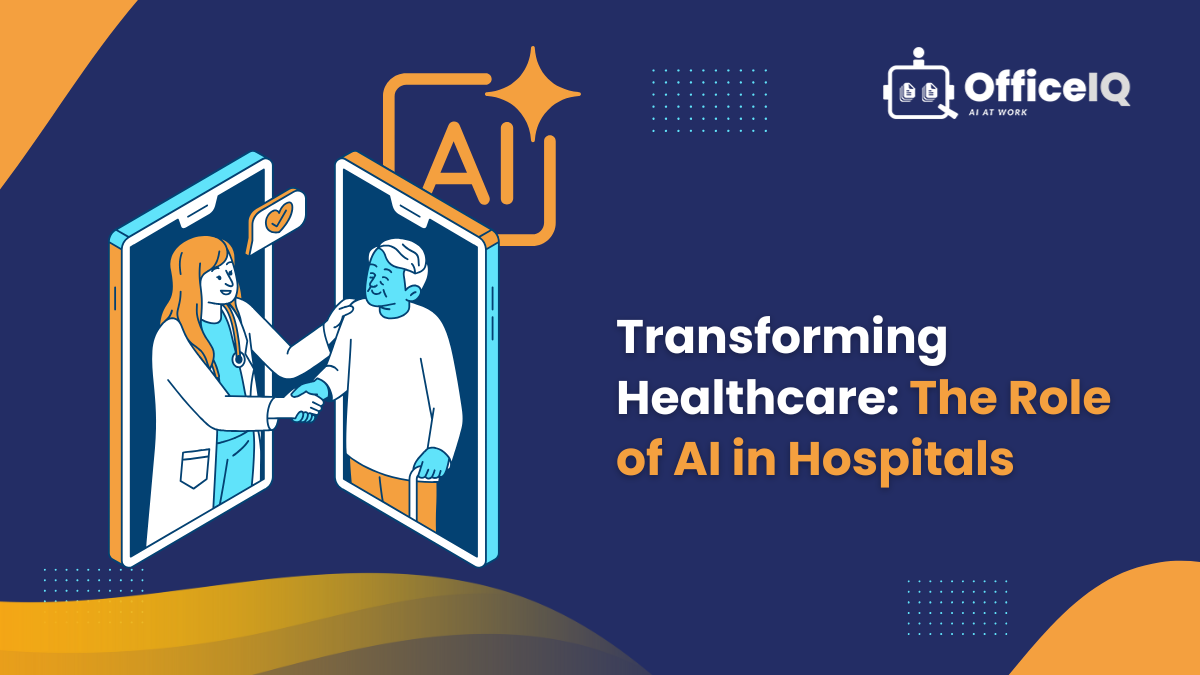Artificial intelligence isn’t just a buzzword in healthcare — it’s reshaping how hospitals deliver care, manage resources, and interact with patients. The phrase “AI in hospitals” covers a spectrum of real-world innovations, from smarter diagnostics to more personalized patient experiences. Let’s look at how AI is making a difference on the ground, what’s next, and what this means for both patients and providers.
How AI in Hospitals Is Changing Patient Care?
Hospitals have always relied on a mix of skilled professionals, complex technology, and mountains of data. But the volume and speed of today’s medical information can overwhelm even the best teams. This is where artificial intelligence in patient care steps in.
Smarter Diagnostics
Imagine a radiologist reviewing hundreds of scans per day. AI-driven imaging tools can flag subtle changes in X-rays, MRIs, or CT scans that a human eye might miss after hours of work. These systems don’t replace radiologists; they act as a second set of eyes, catching early signs of conditions like cancer, strokes, or fractures.
A real-world example: Some hospitals now use AI to screen mammograms, helping doctors catch breast cancer earlier and reduce false positives. The result? Faster, more accurate diagnoses and less anxiety for patients waiting on results.
Predictive Analytics for Better Outcomes
AI applications in healthcare often shine in prediction. Hospitals are flooded with data — vital signs, lab results, electronic health records. AI models can sift through this information to spot trends or risks before they become emergencies.
- Sepsis detection: AI can analyze patterns in a patient’s vitals and lab work, alerting staff to early signs of sepsis — a life-threatening infection — sometimes hours before symptoms become obvious.
- Readmission risk: Algorithms can identify patients at risk for readmission, prompting extra support or follow-up care.
This shift means care teams can intervene earlier, personalize treatment, and use resources more wisely.
Enhanced Workflow and Efficiency
AI in hospitals isn’t just about patient-facing care. Behind the scenes, it’s streamlining operations:
- Scheduling and staffing: Machine learning predicts patient flow, helping hospitals allocate staff more efficiently.
- Supply chain management: AI forecasts inventory needs, reducing waste and ensuring critical supplies are always available.
- Clinical documentation: Natural language processing converts doctors’ notes into structured data, saving hours of paperwork and reducing errors.
Each improvement frees up time and mental energy for clinicians, letting them focus more on patients and less on paperwork.
Real-World AI Applications in Healthcare
The phrase “AI applications in healthcare” covers a lot of ground. Here are a few ways hospitals use AI right now:
Virtual Health Assistants
Chatbots and AI-powered apps answer patient questions, schedule appointments, and provide medication reminders. These tools can’t replace a nurse or doctor, but they can handle routine tasks, freeing up staff for more complex care.
Personalized Treatment Plans
By analyzing genetic information and patient histories, AI can help doctors tailor treatments to individual needs — whether it’s choosing the right medication or adjusting dosages. Oncology is a leading field here, with algorithms helping select cancer therapies based on tumor genetics.
Remote Monitoring and Wearables
Wearable devices collect data on heart rate, sleep, glucose, and more. AI systems monitor this data in real time, alerting care teams to concerning trends. This has been a game-changer for managing chronic diseases and supporting patients after hospital discharge.
Imaging and Pathology
Beyond radiology, AI helps pathologists analyze tissue samples for signs of disease. Algorithms spot patterns in slides faster and sometimes more accurately than manual review, especially in high-volume labs.
Challenges and Ethical Considerations
Of course, artificial intelligence in patient care isn’t without hurdles:
- Data privacy: Sensitive health data must be protected, and AI systems need strict safeguards.
- Bias and fairness: If AI models are trained on unrepresentative data, they can make biased recommendations.
- Trust and transparency: Clinicians and patients need to understand how AI makes decisions — not just accept a “black box” answer.
Hospitals are tackling these issues head-on, with oversight committees, transparent algorithms, and ongoing staff training.
The Future of AI in Hospitals
The journey is just beginning. As AI in hospitals matures, expect to see:
- More integration: AI will connect across departments, linking pharmacy, radiology, labs, and bedside care.
- Continuous learning: AI models will update as they process more data, improving accuracy over time.
- Patient empowerment: AI-powered apps will help patients manage their own health, from medication adherence to lifestyle coaching.
What won’t change? The central role of skilled, caring humans. AI is a tool — a powerful one — but it works best when paired with clinical judgment and compassion.
AI in hospitals is already changing how care is delivered — not by replacing people, but by helping them do their jobs better. The future of medicine will be built on the partnership between skilled professionals and intelligent technology, working side by side for healthier outcomes.
FAQs: AI in Hospitals
Q: How is AI currently used in hospitals?
AI supports diagnosis, predicts patient risks, streamlines workflows, manages inventory, and powers virtual assistants. It’s also used in imaging, pathology, and remote monitoring.
Q: Can AI replace doctors or nurses?
No. AI in hospitals acts as a support tool, not a replacement. It handles routine tasks, analyzes data, and highlights risks, freeing up clinicians to focus on direct patient care.
Q: Is patient data safe when AI is involved?
Hospitals use strict security protocols and comply with privacy laws (such as HIPAA in the U.S.). AI systems are designed with multiple safeguards, but ongoing oversight is essential.

Leave a Reply